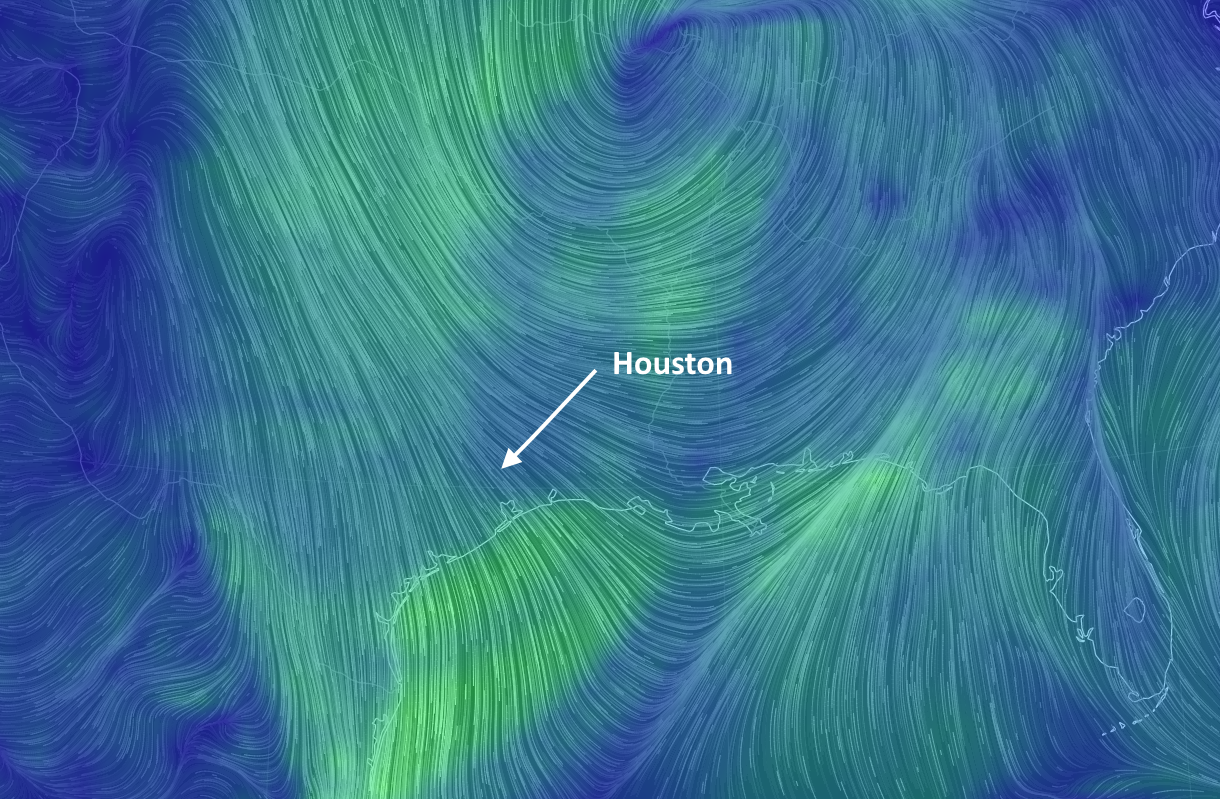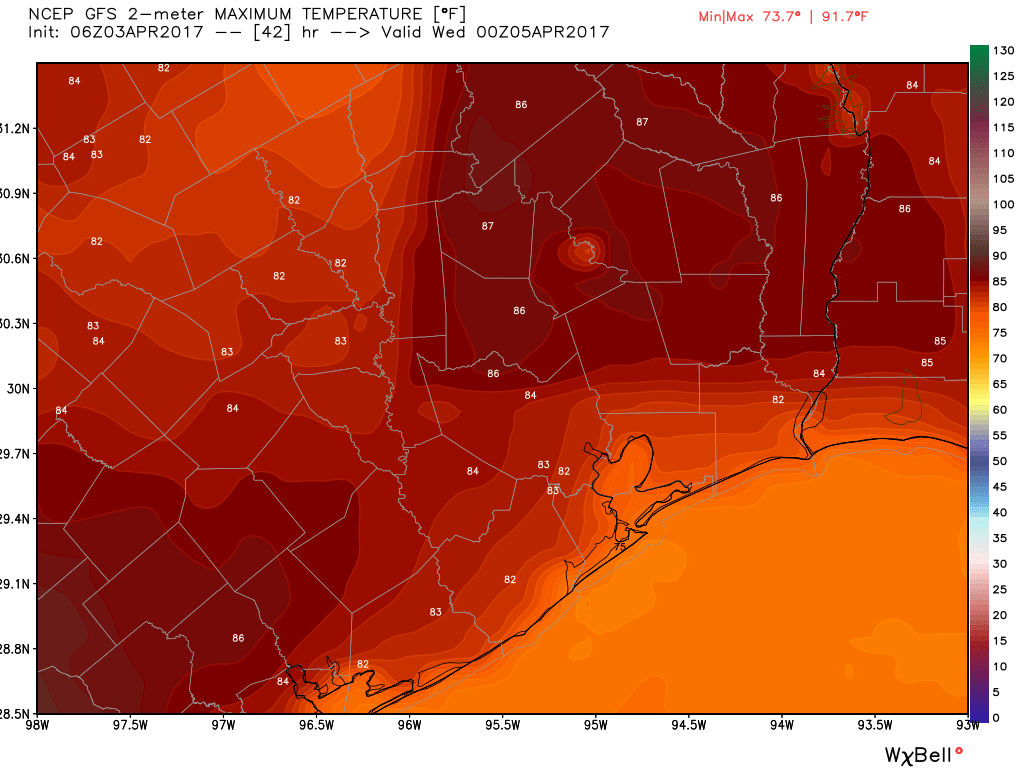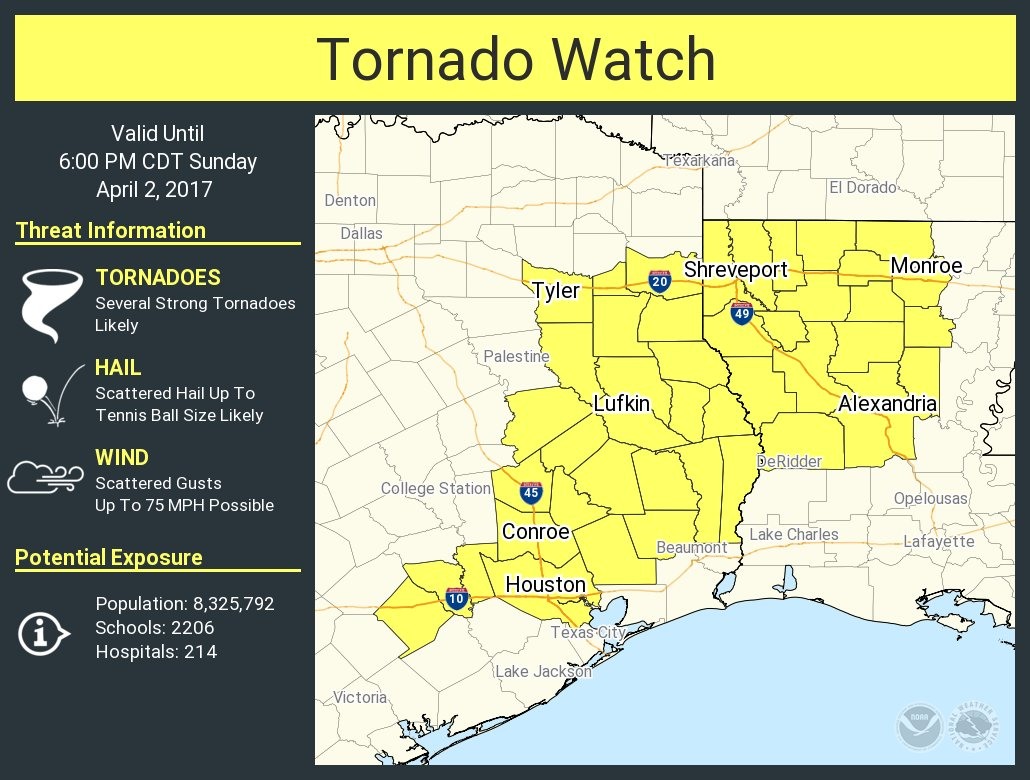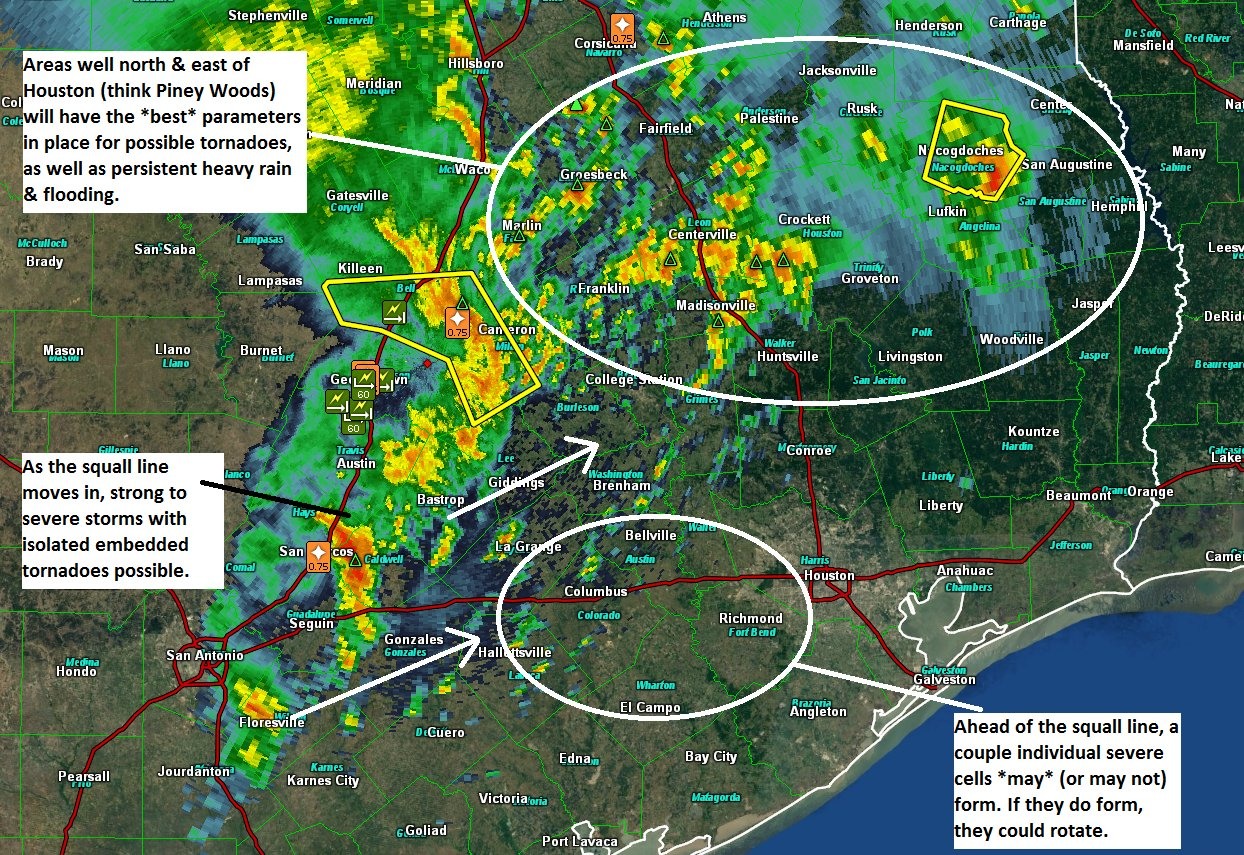The return of warmer air from the south, and mostly sunny skies today, should lead to quite warm temperatures. In fact, there’s at least a slight chance that Bush Intercontinental Airport will record a high of 90 degrees today—and that would be early, but not unprecedented. Houston’s earliest high temperature in a calendar year has come on Feb. 20 (1996), but a more normal time of year is the end of April, or early May. In this case, the heat won’t last long before we return to spring-like weather.
Today
Sunny conditions today, and very warm, before a mild night tonight in the mid-60s.
Wednesday
A cold front will move through Houston early on Wednesday, likely just before, or around sunrise. Despite the moisture return on Tuesday, there probably won’t be more than enough water in the atmosphere to squeeze out a few light, scattered showers. Certainly nothing to be concerned about. Skies should clear out after the front’s passage, and the bigger issue later on Wednesday will be winds, gusting out of the north-northwest at about 20 to 25 mph for most of the day. Winds will die down around sunset, and overnight temperatures will cool down into the low- to mid-50s for most of Houston except for the coast.

(Space City Weather is sponsored this month by The Mole, a Jonathon Price novel.)
Thursday and Friday
We’re looking at two gorgeous days across the Houston region, with highs generally in the mid- to upper 70s, and lows in the mid- to upper-50s. Ample sunshine. Hard—very hard—to beat the weather to end this week. Summer may be coming to Houston, but for now enjoy spring!
Saturday, Sunday, and beyond
We’ll remain mostly sunny this weekend, with highs of around 80 degrees. Lows are going to creep back up, however, with the return of moisture from the Gulf and rising humidity levels. By Sunday night into Monday morning, I think we’ll again see lows only touching about 70 degrees.
The forecast is cloudy for next week—probably the oldest meteorology joke right there, folks—as the potential returns for rain next week. But it’s not clear how much rain comes in. The European model is pretty aggressive, bringing 1-3 inches of rain during the first part of next week, while other models are less wet. Not something to be too concerned about at this time.
Posted at 6:50am CT on Tuesday by Eric



